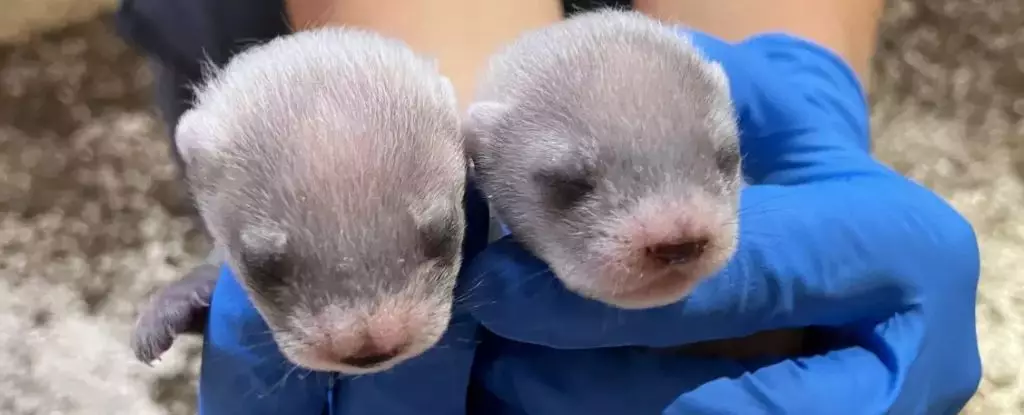In the realm of modern conservation, few stories are as striking as that of the black-footed ferret (Mustela nigripes). Once believed to be extinct in 1979, this small carnivorous mammal has experienced a revival thanks to revolutionary scientific interventions. The remarkable achievements of the past few decades have seen the cloning of the species from the last known wild survivors. Most notably, a female clone named Antonia, derived from a ferret named Willa, born in the 1980s, has recently given birth to two healthy pups. This twist of fate not only shines a light on the potential of biotechnology in species recovery but also raises critical questions about the ethics, efficacy, and practicality of cloning as a conservation strategy.
The journey of the black-footed ferret is inextricably linked to its genetic history. Initially subjected to a severe genetic bottleneck when conservationists began a captive breeding program with just 18 individuals in 1981, the population has seen a scant rise to approximately 350 ferrets in the wild today. However, the limited gene pool associated with this recovery poses significant challenges, including susceptibility to disease and reduced adaptability. This substantiates the argument surrounding Antonia’s genetic contribution; she was cloned from a sample that offers three times the genetic variations found in current wild populations. The introduction of these new genetic variations may facilitate a crucial improvement in genetic diversity—an essential component in establishing a robust and sustainable population.
The successful cloning of Antonia represents not just a biological victory, but also the culmination of collaborative efforts among various scientific and environmental organizations. Teams from the U.S. Fish and Wildlife Service, the Smithsonian Institution, and private nonprofits meticulously worked together to develop successful reproductive technologies, offering a glimmer of hope for other endangered species plagued by similar genetic deficiencies. This collaborative endeavor underscores the importance of interdisciplinary approaches in tackling the multifaceted challenges associated with wildlife conservation in the modern era.
Despite the optimism surrounding Antonia’s birth, the method of cloning as a strategy for conservation remains contentious. Critics question its long-term viability in the absence of strong habitat protection. As conservationist David Jachowski emphasized in his writing, simply cloning endangered species does not address the core issues that precipitated their decline, such as habitat destruction and human-wildlife conflict. The ecological landscape has fundamentally shifted, and without genuine endeavors to preserve and restore the ferret’s native shortgrass prairie habitats, the cloned animals may struggle to survive in a modern world they have long been absent from.
Moving forward, the focus should be on creating an integrative conservation strategy that combines advanced genetic techniques with traditional conservation methods. While cloning shows promise in bolstering genetic diversity, it should not eclipse the need for habitat restoration and the implementation of species recovery plans that consider the complexities of ecosystems. Engaging local communities in conservation efforts, ensuring suitable habitats, and addressing the root causes of biodiversity loss are foundational actions that need strong support from both public and private sectors.
As we applaud the emergence of Antonia and her offspring in the ongoing narrative of the black-footed ferret, it is crucial to maintain a balanced perspective. The technology that brought these clones into existence represents both a promising frontier and a reminder of the intricate web of ecological challenges we face. The ultimate success of such efforts will hinge not solely on scientific innovation but also on our collective commitment to preserving the natural world in which these species thrive. By nurturing their environment alongside their genetic potential, we can work towards a future where the black-footed ferret—and indeed many endangered species—can reclaim their rightful place in the wild.


Leave a Reply